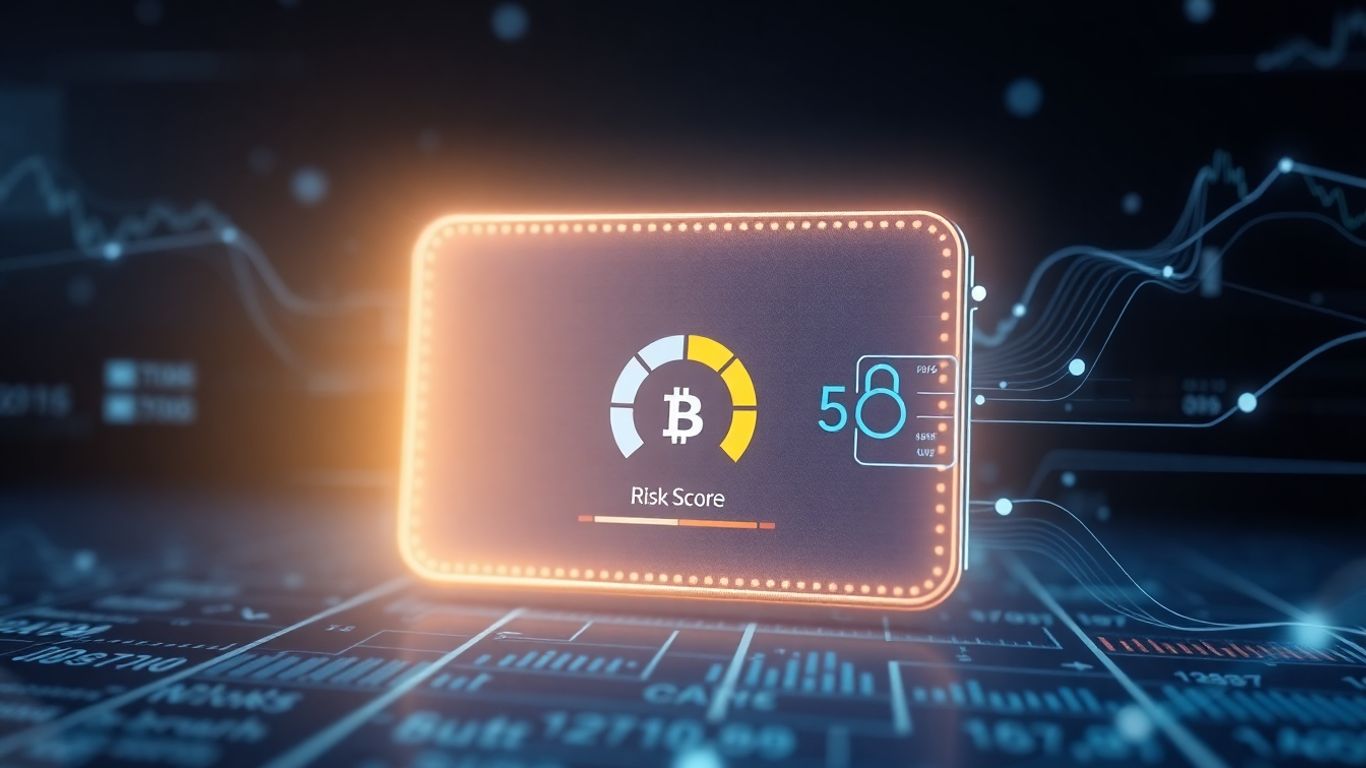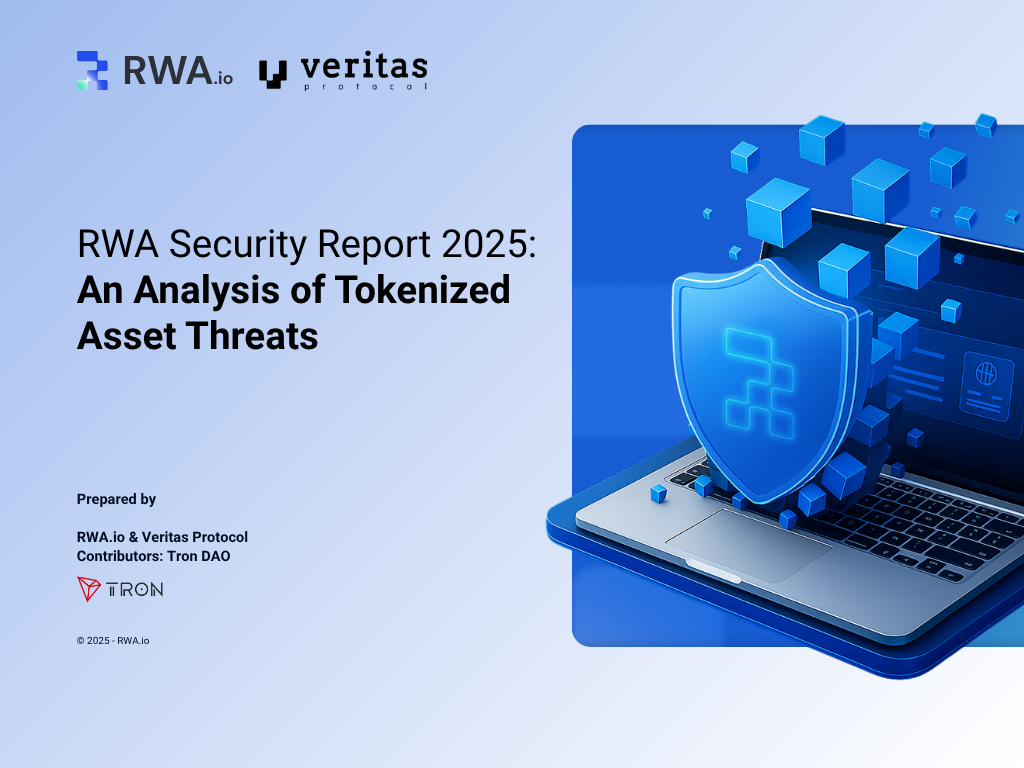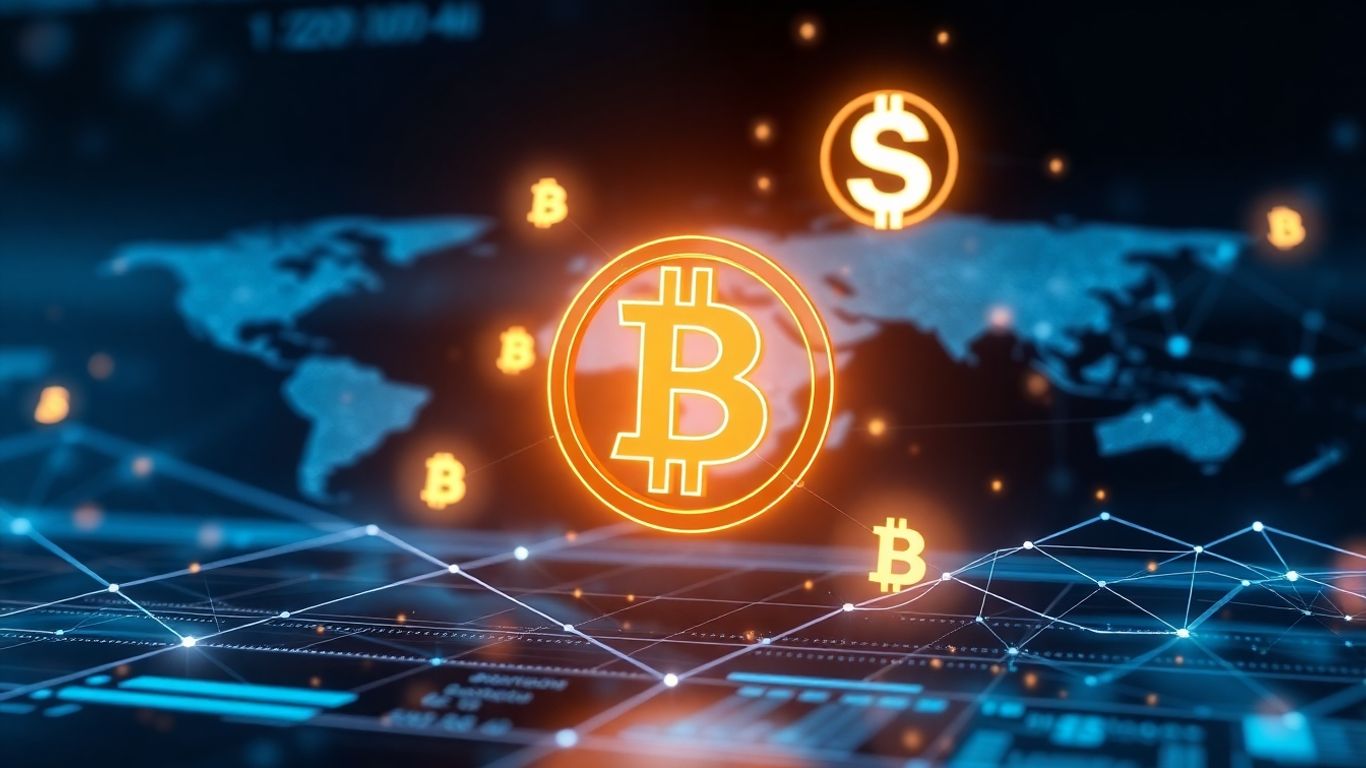[ newsletter ]
Stay ahead of Web3 threats—subscribe to our newsletter for the latest in blockchain security insights and updates.
Thank you! Your submission has been received!
Oops! Something went wrong. Please try again.
Learn about oracle manipulation detection, identifying vulnerabilities, and implementing proactive measures for DeFi security.





You know, in the world of decentralized finance, or DeFi as everyone calls it, things can get a bit wild. A big part of what keeps everything running smoothly are these things called oracles. They're like the eyes and ears of the blockchain, feeding real-world data, especially prices, into smart contracts. But, like anything valuable, they can be a target. People can mess with these price feeds, and that's where oracle manipulation detection becomes super important. It's all about making sure the prices smart contracts use are the real deal, not some made-up numbers designed to rip people off.
In the world of decentralized finance (DeFi), oracles are like the messengers that bring real-world information, such as asset prices, onto the blockchain. Smart contracts rely on this data to make decisions, like when to liquidate a loan or execute a trade. But what happens when these messengers get their wires crossed, or worse, are deliberately fed bad information? That's where oracle manipulation detection comes in. It's all about making sure the data these smart contracts are using is accurate and hasn't been tampered with.
Oracles are absolutely vital for DeFi to function. Without them, smart contracts would be stuck in a bubble, unable to interact with anything outside their own code. They provide the external data needed for things like:
Essentially, any DeFi protocol that needs to react to external market conditions depends heavily on a reliable oracle.
Price Oracle Manipulation, or POM, is when an attacker intentionally influences the price data provided by an oracle to their own advantage. This usually involves exploiting how certain oracles get their price information. A common method is using flash loans to temporarily flood a decentralized exchange (DEX) with a large amount of a specific token. Because some oracles pull their prices directly from DEX liquidity pools, this artificial price surge can trick the oracle into reporting a wildly inaccurate price. The core problem is that smart contracts often trust this manipulated data without question.
Attackers have a few favorite ways to mess with oracles:
The impact of these attacks can be devastating. We've seen instances where manipulated prices led to massive, unwarranted liquidations, draining user funds. In other cases, attackers have profited by exploiting the artificial price discrepancies created by their manipulation.
The reliance on external data makes DeFi protocols vulnerable. When the data source is compromised or manipulated, the smart contracts that depend on it can execute actions that are detrimental to users and the protocol itself. This highlights the need for robust checks and balances on the data feeding into these critical systems.

When building decentralized applications (dApps), it's easy to overlook the security of the data sources your smart contracts rely on. Oracles, the bridges between the blockchain and the real world, can become weak points if not implemented carefully. Understanding these vulnerabilities is the first step to protecting your project.
On-chain oracles often pull data directly from decentralized exchanges (DEXs) or other on-chain sources. While this sounds decentralized, it can create specific attack vectors. A common issue arises when a protocol uses a single DEX liquidity pool to determine an asset's price. An attacker could use a flash loan to drastically alter the price in that specific pool. Because the smart contract blindly trusts this single source, it will execute actions based on the manipulated price, potentially leading to significant losses for the protocol or its users. This reliance on a single, easily manipulated data point is a major vulnerability.
Off-chain oracles, while potentially more robust in data sourcing, introduce a different set of security concerns. These systems involve traditional software, APIs, and potentially centralized infrastructure to gather and relay data. The attack surface here expands beyond the blockchain itself.
The security of an oracle isn't just about the smart contract code; it extends to all the underlying infrastructure and processes that bring external data onto the blockchain. A weakness in any part of this chain can compromise the entire system.
Hybrid oracles attempt to combine the benefits of both on-chain and off-chain approaches, often using multiple data sources and aggregation mechanisms. While this can improve resilience, it also introduces complexity and new potential failure points.
Smart contracts often depend on external price feeds to make decisions. This reliance, while necessary for many DeFi applications, can become a weak spot if not handled carefully. When a contract just takes a price value without checking it, it's like trusting someone with your wallet without asking for ID. This is where things can get dicey.
Many smart contracts are built to directly pull price data from a single source, like a decentralized exchange (DEX) or a specific oracle provider. This is the simplest way to get price information, but it also means the contract is completely at the mercy of that one feed. If that feed gets manipulated, the contract will act on bad information, potentially leading to significant losses.
For example, a lending protocol might use a DEX's price feed to determine collateral value. If an attacker can artificially inflate the price of a token on that DEX, they could deposit it as collateral and borrow more than its actual worth. The smart contract, blindly trusting the feed, would allow this.
A common pitfall is the absence of any validation or cross-checking mechanisms. A contract might pull a price, but it doesn't verify if that price makes sense in the broader market context. It doesn't ask, "Does this price seem reasonable compared to other sources?" or "Has this price changed drastically in a short period without a good reason?"
This lack of checks means that even a small manipulation on the source feed can go unnoticed. The contract just executes based on the faulty data it receives. It's like a cashier accepting a counterfeit bill because they don't have a way to check its authenticity.
Relying on just one price source creates a single point of failure. If that source is compromised, hacked, or simply experiences an error (like the Synthetix sKRW incident where an off-chain component failure caused a massive price misreport), the smart contract that depends on it is immediately vulnerable. This dependency can lead to:
It's really important to think about how a smart contract uses price data. Just grabbing the first number you see can lead to big problems down the road. Building in checks and balances is key to keeping things secure.

When building decentralized applications, relying on a single price feed from an oracle can be risky. Attackers can target these single points of failure to manipulate prices and exploit your protocol. To build more resilient systems, we need to think ahead and put safeguards in place before any issues arise. This means not just reacting to problems, but actively building defenses.
One of the most straightforward ways to make your oracle setup more robust is to stop relying on just one source. If one feed goes bad or gets manipulated, you have others to fall back on. Think of it like having multiple witnesses to an event instead of just one.
Just getting data from multiple sources isn't enough. You need to check if that data makes sense. This is where validation comes in. It's like having a quality control step for your price feeds.
Decentralized Oracle Networks (DONs) are designed to address many of the vulnerabilities found in centralized or single-source oracles. They use a network of independent nodes to fetch, validate, and aggregate data, making them much harder to manipulate.
Relying on a single source for critical data like asset prices is like building a house on a single pillar. When that pillar cracks, the whole structure is at risk. Diversifying your data sources and implementing smart validation checks creates a much stronger foundation, making your decentralized application significantly more resistant to manipulation attempts. It’s about building redundancy and intelligence into your system from the ground up.
So, how do we actually catch these sneaky oracle manipulations before they cause a big mess? One solid way is by looking at the numbers. We can set up systems to constantly check if the price data coming from an oracle is acting weird compared to what we expect. Think of it like this: if your car's speedometer suddenly jumps from 30 mph to 100 mph in a second, you know something's up, right? The same idea applies here. We can calculate things like standard deviations or look for sudden, massive price swings that don't make sense in the real market. If a price feed shows a 50% jump in a minute for an asset that's usually pretty stable, that's a big red flag.
Here's a basic idea of what we'd monitor:
We can even set up alerts. If the price deviation crosses a certain threshold, an alert fires off, letting the team know to investigate. It's all about spotting those outliers that scream "something's not right here."
Beyond just looking at price changes, we can also watch how the whole system behaves in real-time. This is where anomaly detection comes in. It's like having a security guard who doesn't just look for obvious break-ins but also notices if someone's acting strangely or if something's out of place, even if it's not a direct attack yet. We can monitor transaction patterns, gas usage, and other on-chain activities. For instance, a sudden surge in transactions related to a specific asset or oracle call, especially if it's from new or unusual addresses, could be a sign of an impending attack or an ongoing manipulation attempt.
The key here is to establish a baseline of normal activity. Once you know what 'normal' looks like, spotting deviations becomes much easier. This could involve looking at the number of transactions, the size of those transactions, or even the types of smart contracts being interacted with around the time price data is being fetched.
This kind of monitoring helps catch not just direct price manipulation but also the preparatory steps an attacker might take. It's a more holistic approach to security.
Manually keeping an eye on all these metrics is a lot of work, especially for complex systems. That's where automation shines. We can build scripts and use specialized tools to do the heavy lifting. These tools can continuously scan price feeds, compare data from multiple sources, and flag suspicious activity automatically. Some advanced systems even use machine learning and Large Language Models (LLMs) to get smarter over time.
For example, an LLM-driven framework could:
These automated systems can process vast amounts of data and identify subtle patterns that a human might miss. They can also help in generating audit reports or suggesting specific areas that need closer inspection. It's like having a super-smart assistant that's always on the lookout for trouble.
When you're building a DeFi project, picking the right oracle provider is a big deal. It's not just about getting price data; it's about trusting that data. Some providers might seem cheaper or easier to integrate, but that can be a trap. Look for providers that have a solid track record, transparent operations, and a history of security. A provider that uses multiple, independent data sources and has built-in checks for outliers is generally a safer bet. Think about their uptime, how they handle data updates, and what their community says about them. Don't just go with the first one you find; do your homework.
Even with the best oracles, things can go wrong. That's where circuit breakers and pausing mechanisms come in. A circuit breaker is like an emergency stop button. If the oracle starts spitting out wild, unbelievable price data – say, Bitcoin suddenly jumps to a million dollars in a minute – the circuit breaker can temporarily halt certain operations or freeze the protocol. This gives the team time to investigate without letting the bad data cause massive losses. Similarly, a pausing mechanism allows the protocol to be temporarily shut down if a critical issue is detected, preventing further damage. These aren't meant to be used often, but having them ready is like having a fire extinguisher – you hope you never need it, but you're glad it's there.
Security isn't a one-time thing; it's an ongoing process. You can't just deploy your smart contracts and forget about them. Regular security audits and assessments are super important. This means having independent security experts look over your code, your oracle integrations, and your overall system design. They can spot vulnerabilities that you and your team might have missed, especially as new attack methods pop up. Think of it like getting a regular check-up from your doctor. It helps catch problems early before they become serious. These audits should cover not just the smart contracts themselves but also how they interact with external data sources like oracles.
The complexity of DeFi means that vulnerabilities can hide in unexpected places. A thorough security assessment should consider not just direct code flaws but also the potential for manipulation through external dependencies, like price feeds. It's about looking at the whole picture, not just individual pieces.
So, we've talked a lot about how price oracles can be messed with and why that's a big deal for DeFi. It's not just about fancy code; it's about making sure the information these systems rely on is actually real. Using multiple sources, checking the data before it's used, and having safety nets like pausing systems when things look weird are all good steps. Plus, getting smart contract audits done regularly can catch a lot of these issues before they become problems. Ultimately, keeping those price feeds accurate is key to making sure decentralized finance stays safe and fair for everyone.
Think of an oracle as a messenger that brings important real-world information, like the price of a cryptocurrency, onto the blockchain. DeFi apps, like those for lending or trading, need this information to work correctly. Without oracles, these apps wouldn't know how much things are worth, making it impossible to do deals.
Manipulating an oracle means tricking it into giving out wrong information. Imagine someone telling you that a candy bar costs $100 when it really costs $1. If you believed them and bought it, you'd be tricked! Attackers do this to DeFi apps to make them think prices are different than they really are, allowing the attackers to steal money or gain an unfair advantage.
One common way is by using 'flash loans.' These are like super-fast loans that you get and pay back all in the same transaction. Attackers use these loans to quickly buy up a lot of a certain cryptocurrency on a trading platform, making its price seem much higher. Then, they trick the oracle into reporting this fake high price, which can cause problems for DeFi apps that rely on it.
If a DeFi app only listens to one messenger (one oracle), it's like only having one friend tell you the news. If that one friend is tricked or lies, you get bad information. Attackers can easily target that single source. It's much safer to listen to many friends (multiple oracles) and compare their stories to make sure you're getting the real truth.
To make oracles safer, developers can use several tricks. They can get price information from many different oracles instead of just one. They can also add checks to see if the price seems too weird or changes too quickly. Sometimes, they even build in a 'circuit breaker' that can stop everything if something looks fishy, like pausing the app until the problem is fixed.
Yes, there are! Some smart tools can watch the prices from oracles and compare them to other sources. They look for strange patterns or big jumps in prices that don't make sense. Advanced systems can even use smart computer programs, like AI, to learn what normal price behavior looks like and flag anything unusual before it causes harm.


